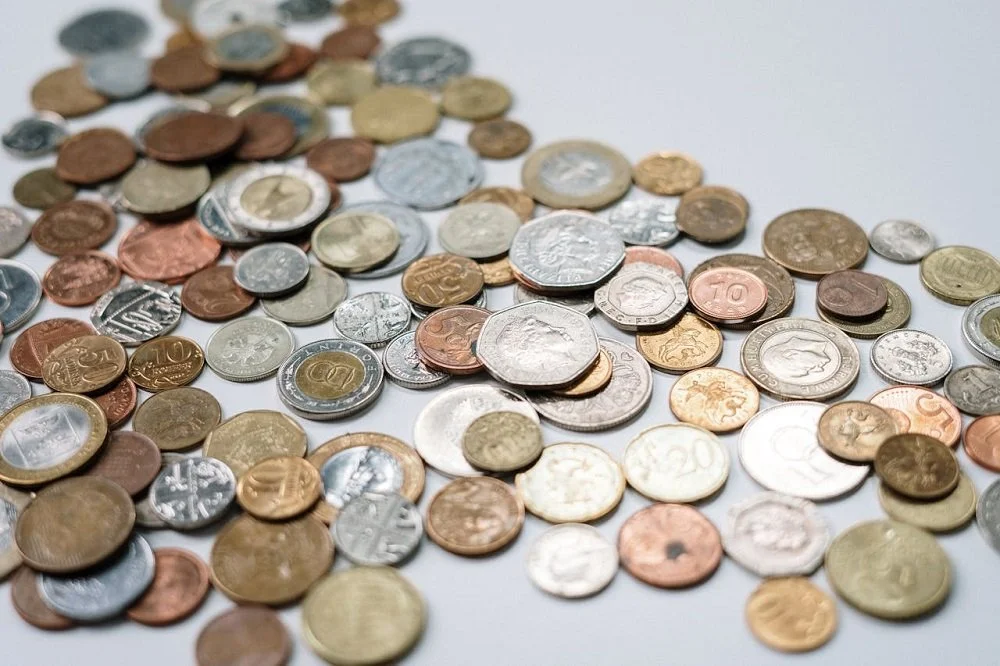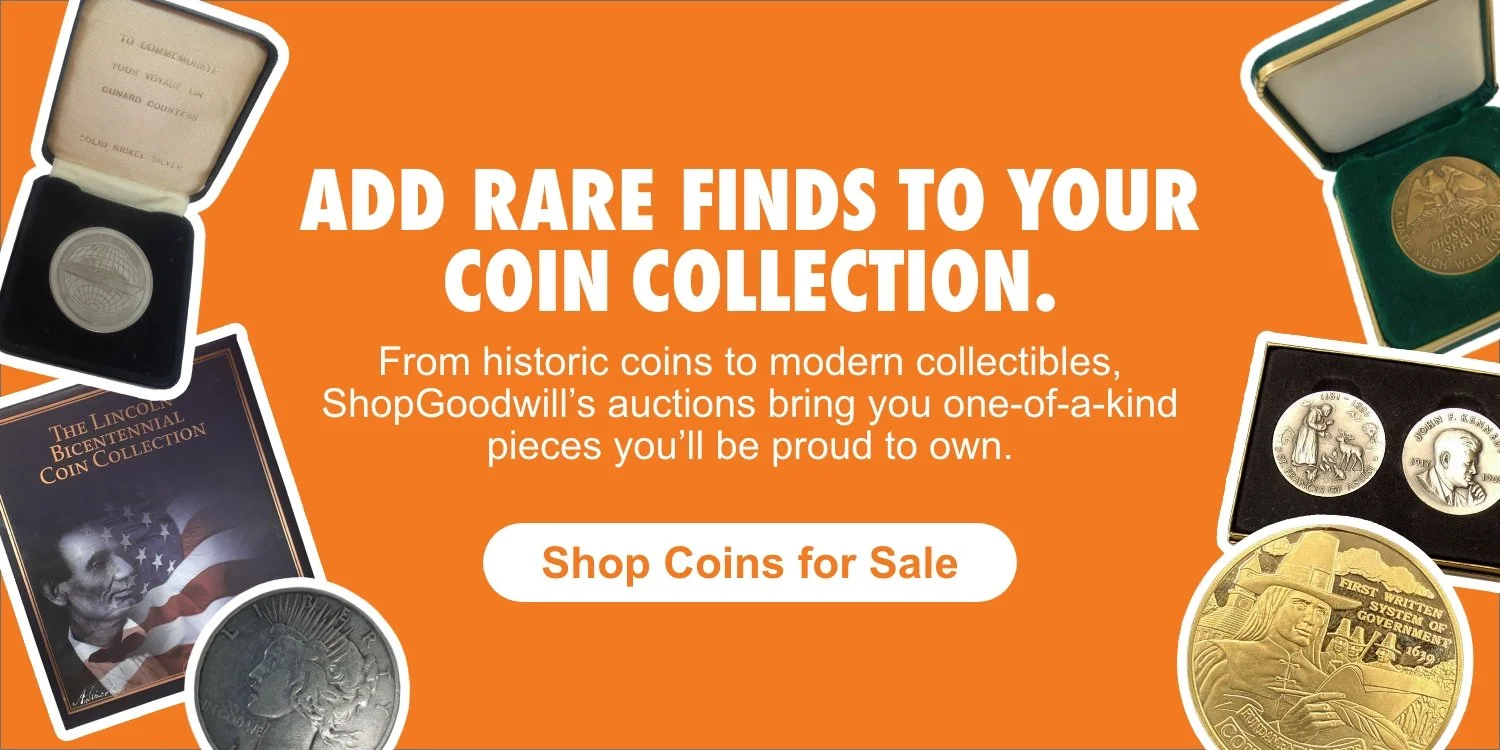How to Find Rare and Valuable Coins
In 2024, the U.S. Mint produced about 5.6 billion circulating coins, yet only a small fraction will ever be truly valuable to collectors.(1) Spotting those hidden gems takes more than chance. Whether you’re just getting started or looking to sharpen your skills, identifying valuable coins comes down to knowledge, patience, and knowing where to look.
With interest in collectibles for sale and coins for sale growing across both online platforms and local markets, there’s never been a better time to explore the world of rare coins. This guide covers essential tips for evaluating coins and building a collection with real significance.
What Makes a Coin Rare or Valuable
Understanding what gives a coin its value is the first step in determining what to add to your collection or hold onto for future appraisal.
Key Factors That Influence Value
When learning how to find rare coins, it helps to understand the key factors that influence their value. From mintage numbers to condition and historical significance, several details can make the difference between an ordinary coin and a collectible worth holding onto:
Mintage: The total number of coins produced. Generally, the lower the mintage, the higher the rarity.
Condition: Coins in better condition (especially those that are uncirculated or professionally graded) tend to be worth more.
Mint mark: Indicates where a coin was produced. Some mints had shorter runs, making their coins rarer.
Age and historical context: Older coins and those tied to historical events can hold higher significance.
Errors and variants: Misprints, off-center strikes, and doubled dies can turn ordinary coins into valuable collectibles.
Together, these elements help determine coin value and give collectors much more to consider than just the date stamped on the surface.
Types of Rare Coins Collectors Seek
Some coins have earned legendary status in the numismatic world.(2) While you may never stumble upon a million-dollar piece, knowing what types of coins hold value will help you focus your efforts.
Popular categories include:
Pre-1933 U.S. Gold coins
Morgan and Peace Silver Dollars
Bust Half Dollars and Dimes
Early Lincoln Cents
Barber Quarters and Dimes
These rare coins to look for are just the beginning. Regional variations, international issues, and ancient coins also appeal to collectors who appreciate depth and history in their collection.
Where to Look for Rare Coins
Great finds can show up in the most unexpected places, but a few tried-and-true spots are worth making part of your routine.
Coin Shops and Dealers
Local coin shops offer a great opportunity to browse curated inventory and speak directly with knowledgeable dealers. Many shops specialize in old coins, gold and silver currency, or specific historical periods. Ask questions, review prices, and take notes on what you see—it all contributes to your understanding of the market.
Look for reputable coin dealers with years of experience and a clear grading process. Establishing relationships can give you access to exclusive inventory or early alerts on new arrivals.
Online Marketplaces and Auctions
The internet has made finding rare coins easier than ever, opening up access to collections from across the country. Online auction sites and coin marketplaces allow you to shop for coins by date, mint, metal, and price range.
When buying online, always read seller reviews, look for high-resolution images, and verify the grading source. Online thrift stores like ShopGoodwill.com offer curated collectibles and coins for sale, often with detailed product descriptions that help you buy with confidence.
Estate Sales, Flea Markets, and Garage Sales
For those who love the thrill of the hunt, local sales can yield surprising treasures. Estate sales and garage sales occasionally turn up valuable coins tucked away in forgotten drawers. Flea markets may also feature vendors with partial collections, often priced without full knowledge of their worth.
Bring a magnifying glass, take your time browsing, and look for older coins or currency sets that appear out of place. You never know what might turn up at the bottom of a mixed box.
Coin Shows and Conventions
Coin shows bring together a range of dealers, appraisers, and collectors under one roof. These events are ideal for both networking and hands-on education. You can compare coins in person, get free evaluations, and expand your knowledge by speaking directly with experts.
Whether you're diving into coin collecting for beginners or you're a seasoned collector looking to network and learn more, conventions offer a wealth of knowledge and resources.
Tips for Identifying Rare Coins
Knowing how to spot value in a coin takes time and a sharp eye. These tips can help sharpen your skills and make identifying valuable coins easier.
Recognizing Key Dates and Mint Marks
Start by memorizing key dates that are known for their rarity. Examples include the 1909-S VDB Lincoln Cent or the 1916-D Mercury Dime. In addition to dates, pay attention to mint marks (like "D" for Denver or "S" for San Francisco), which can drastically change a coin's value.
Combining the right date and mint mark often signals lower mintage or historical importance, both of which increase worth.
Spotting Errors and Variants
Error coins are favorites among collectors. Look for signs of:
Doubled dies
Misaligned strikes
Off-center images
Die cracks
These imperfections are often listed in professional price guides and can turn an otherwise common coin into a rare one.
Using Coin Reference Guides
Reference books and online databases are essential tools. Trusted sources like the Red Book, PCGS Price Guide, and Numista help you:
Compare images
Check estimated values
Verify authenticity
Understand coin history
These resources are especially helpful when evaluating condition, understanding mintage numbers, or identifying uncommon variants.
How to Evaluate a Coin’s Value
Evaluating a coin's worth is more than checking a price chart. Here are the steps experienced collectors and dealers follow:
Assess condition: Use grading scales to determine where your coin falls, from "Good" to "Mint State." (3)
Check for rarity: Cross-reference your coin's date and mint mark against known low-mintage issues.
Research past sales: Look up recent auction results or online listings for similar coins.
Use multiple sources: Don’t rely on one guide—compare PCGS, NGC, and independent dealer evaluations.
Get a professional opinion: If your coin might be high-value, seek an appraisal from a reputable grading service.
Combining these steps gives you a more accurate picture of your coin’s market potential.
Discover Rare Coins at ShopGoodwill.com
Looking for an easy way to explore new coins from the comfort of home? ShopGoodwill.com makes it simple. With a wide mix of coin listings updated regularly, it's a fun and approachable place to grow your collection. Detailed descriptions and clear images help take the guesswork out of buying, so you can focus on what catches your eye.
Whether you’re just starting out or you’ve been collecting for years, shopping through ShopGoodwill.com adds a sense of discovery to the process—and you never know what you might come across.
With ShopGoodwill.com in your corner, the search becomes less about luck and more about enjoying the thrill of discovery. And every bid you place supports Goodwill’s mission to fund job training and community-based programs so your hobby helps others thrive, too.
Sources:
American Numismatic Association. Coin Grading Basics. blog.money.org/coin-collecting/coin-grading-basics
Bankrate. 10 of the Most Valuable Coins in the World. www.bankrate.com/investing/worlds-most-valuable-coins/
United States Mint. Circulating Coins Production. https://www.usmint.gov/about/production-sales-figures/circulating-coins-production


